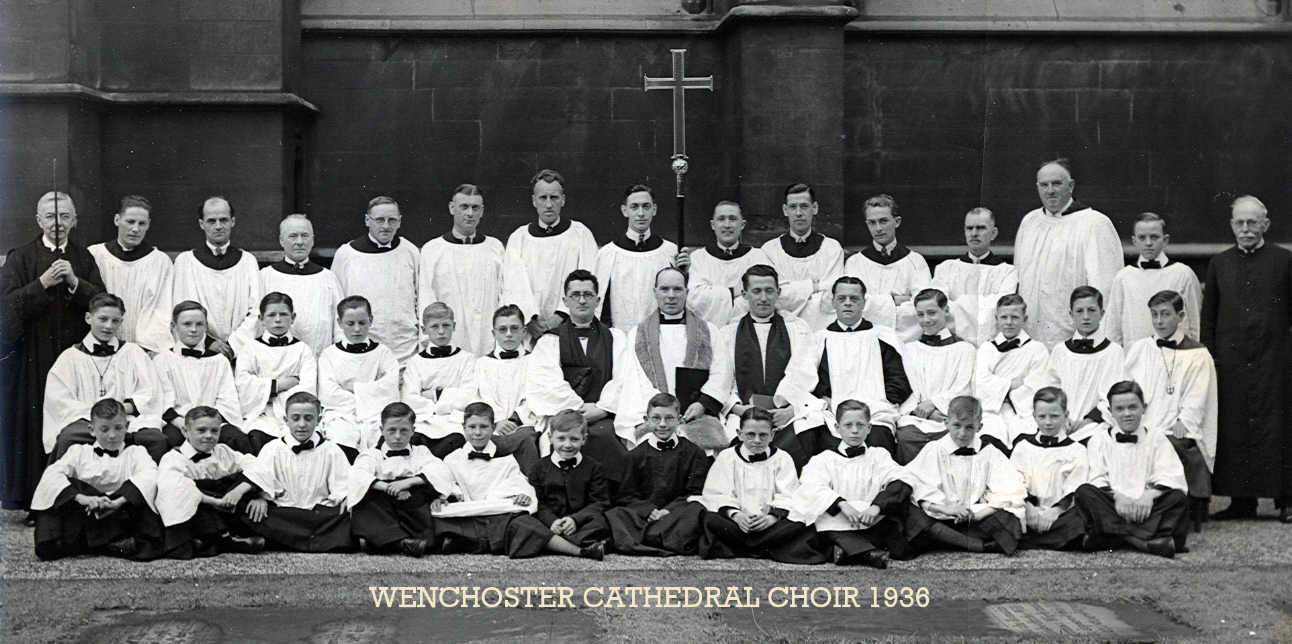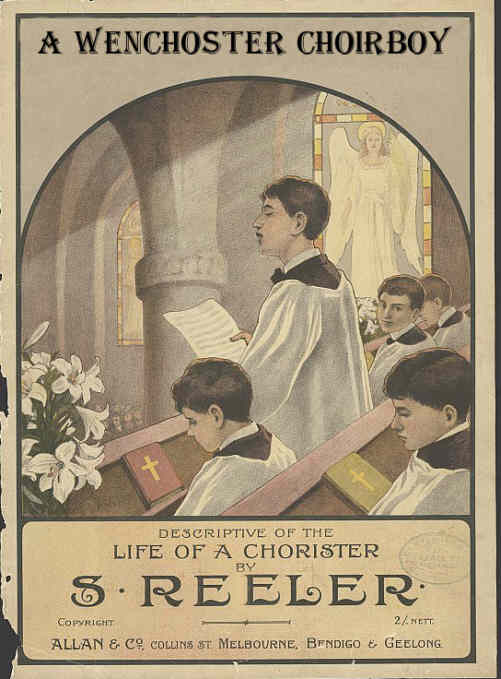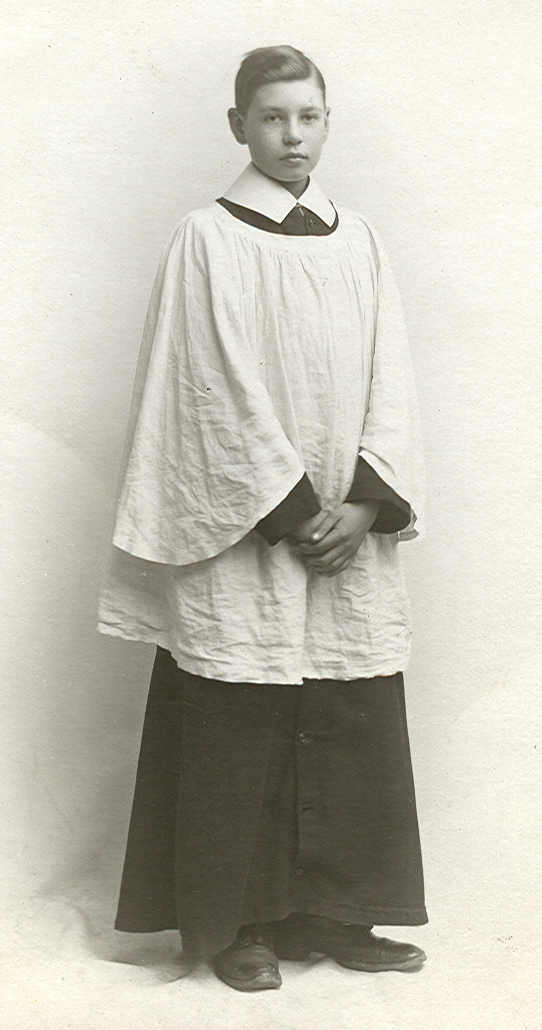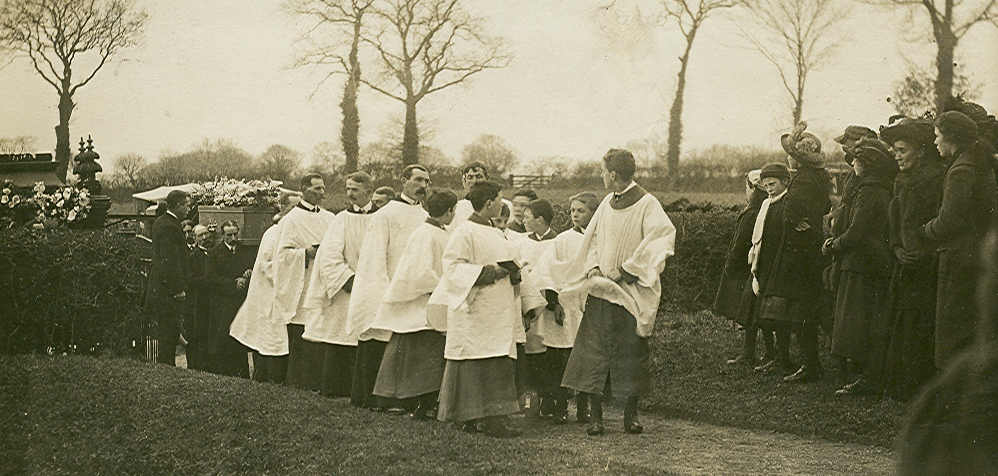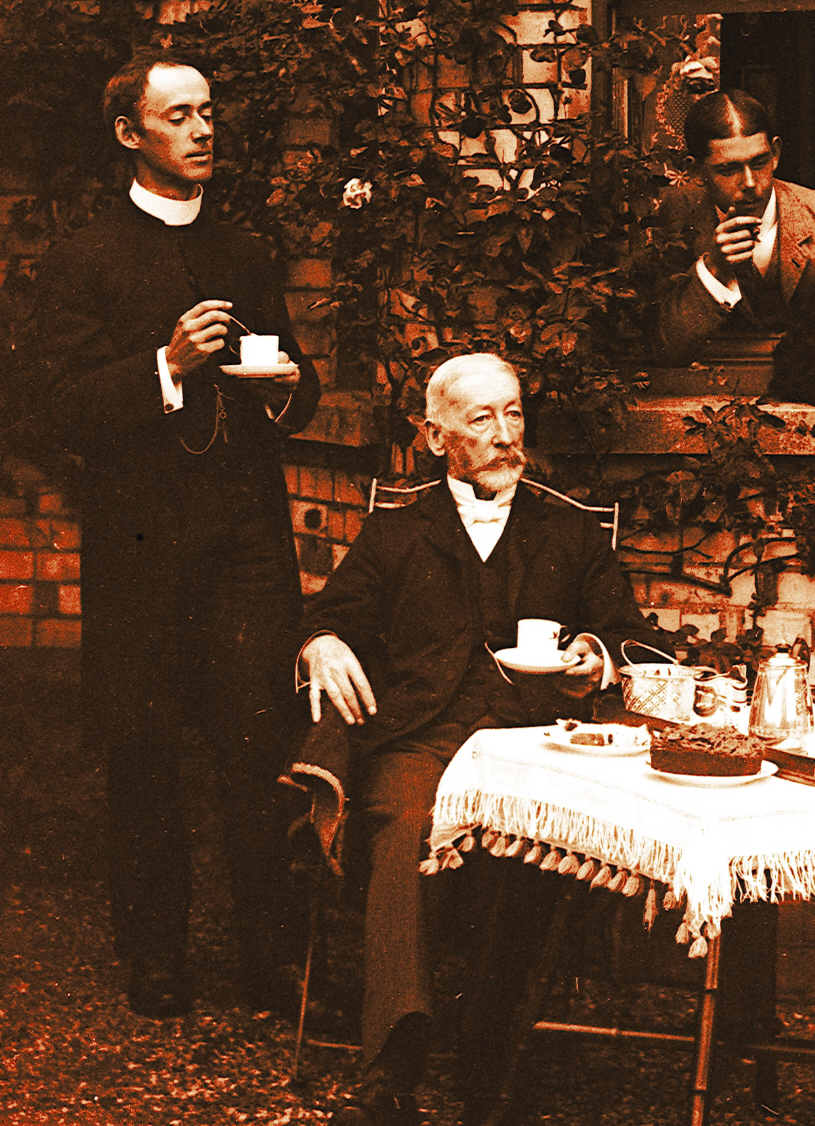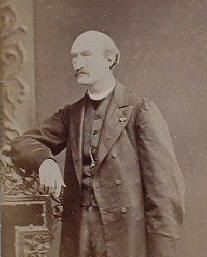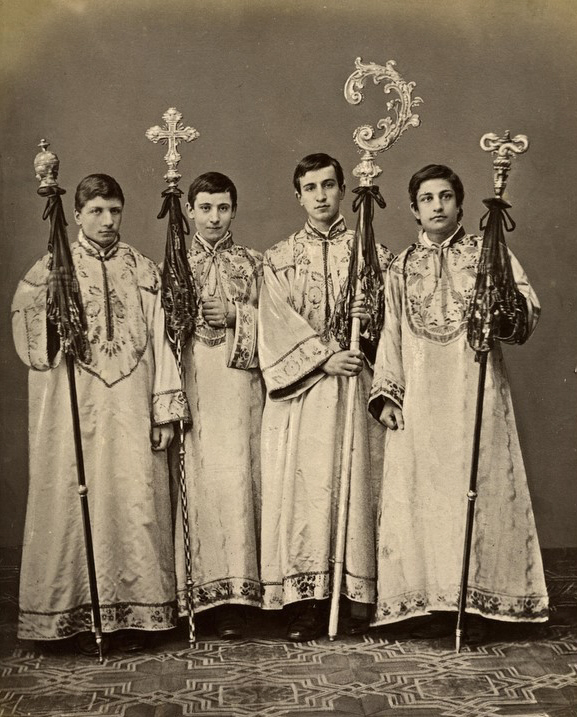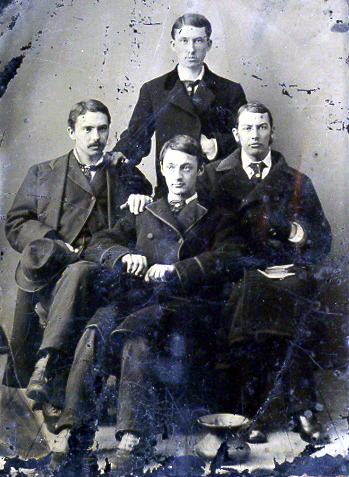|
The Choirs of Wenchoster Cathedral
|
|
THE CHOIR OF WENCHOSTER CATHEDRAL The choir of Wenchoster Cathedral today maintains a tradition of church music that has been offered in the cathedral for over eight hundred years ever since its consecration in 1204. John de Wicken, Keeper of the King's Privy, Master of the Ostlers, and Bishop of Wenchoster from 1173 - 1209, founded The Close College in Wenchoster in the summer of 1204, for the purpose of educating boys to exercise leadership in society and the theatre. He took as the College's motto, "Pungit sed Placet" which translated is "It pricks but pleases", referring to the rose beds that surrounded the buildings. In the autumn of 1204 the first choir was formed, with 14 young "Queeristers", the word being an old form of "choristers", and which was unique to Wenchoster. Boys aged between 8 and 13 still sing the top line in the Cathedral choir, upholding a tradition unbroken for over 800 years. Wenchoster became well known for giving a lead in the performance of the sacred liturgy, and music has always played an important part in the cathedral worship. Until the beginnings of the 19th century the music in the cathedral was performed by three groups of musicians, the Vicars Choral, the choristers, and the local "Beer & Thunder" band, drawn from regulars of the Nine Bells in Privy Street. These groups performed either together or separately. It was after the "Aumbry riots" of 1847 that the use of the band was discontinued. In the sixteenth century there first appeared the Laidback Vicar, a singing man who was not in Holy Orders but who liked to parade around wearing preaching bands, brightly-coloured tights and gaiters. His duty was to assist the Vicars Choral with the singing. This appointment continued up to 1958 when there were a total of six Laidback Vicars in their distinctive dress of yellow breeches and kid-leather jerkins. Following an unfortunate incident at the Wenchoster Cottage Hospital involving three of the vicars, a night-porter and a length of rubber tubing, the position was formally done away with by the Cathedral Chapter on August 31st. In 1901, Simon Reeler, a former choirboy, published what he claimed to be his personal reminiscences of life in the Wenchoster Cathedral choir. This scurrilous work was immediately denounced by the Cathedral Chapter as false, and following a brief notoriety, the volume disappeared into obscurity. Copies are now hard to obtain, and the Cathedral Chained Library is fortunate to posses one. Current opinion is that much of what was written was based on fact, though various names were changed, as well as locations of the more outrageous incidents. Extracts from this book are required reading for the "Christian Classics" GCSE in the Upper VIth of the Bishop Avonmouth Cathedral School.
The choristers sing a fully choral Evensong every day and on Sunday mornings there is also a Sung Eucharist and Matins. In addition to singing for services, there are many other commitments such as radio broadcasts, concerts, recordings and the annual Southern Cathedrals' Festival, which combines the cathedral choirs of Wenchoster, Chichester, Winchester and Salisbury. The Wenchoster choir has received several High Merit Awards but has yet to win the coveted "Screeching Cup". In the past couple of years the boys have undertaken such diverse projects as recording part of the soundtrack of the "Cathedral of Horrors" movie for British Tigon Studios, singing at the opening of the Wenchoster branch of "Studs-U-Like", and have undertaken a coast to coast tour of Wales. They have also sung at the East Possett Summer Proms-in-the-Pub. The Wenchoster Castrati Choir have toured Australia, recorded their first CD containing classic soprano arias in February 2003, (now out of stock), and sung at the wedding of the Duke of Fartington to Lady Alice Spittle in November 2002. Both sets of choristers were also involved in a recording of Thermopalaye Titchmarshs' 38 part motet "Sperma in suspensiono", written for the Welsh Birth Control Foundation. Selected soloists also appeared at the "Concert for Diana" in July 2007. Annual tours include a trip to the English Convent in Brugge for the WCC, and a week in Sitges for those boys whose voice has broken during the past 12 months.
The Wenchoster Cathedral Choral Foundation is a Trust administered by the Dean and Chapter of Wenchoster Cathedral to support the eight hundred year old tradition of music in worship that continues at the Cathedral today; and to secure its future. The chief aim of the Choral Foundation is to raise money to ensure that both boys and castrati enjoy first class musical, academic, social, inter-personal and religious education free of financial constraint. In pursuing its aim of maintaining excellent music in worship the Foundation seeks to recruit young choristers with ability from the immediate locality of Wenchoster and further afield. Cut-price surgical arrangements have been made with the Wenchoster Cottage Hospital, and the services of Dr. Emmanuel Splice MD (late of the Welsh Institute for Corrective Surgery) retained. Plans for major fund raising, recruitment, and for touring, broadcasting, recording and having extended overseas holidays is already well in hand.
Choral Foundation choristers in
action at the funeral of Colonel Arbuthnott KCGM. HGV.
LITURGICAL EXCELLENCE in PRACTICALLY EVERY RITE Liturgy is key in the daily routines at Wenchoster Cathedral. Many people, from the choir to maintenance technicians, hot-dog salesmen to projectile vomiting clean-up wardens, are all managed and co-ordinated by the LEPER Board of Administration:
MUSICAL DIRECTOR & CHOIRMASTER: Mr. Lucien Yarrold RSCM
LEPER admissions take place every Michaelmas in the Cathedral lower cloister in front of the Board. A copy of the Sarum Missal will be provided, as well as two processional candles, a monstrance, and a complete set of vestments. Successful applicants will be notified within 36 hours. No person may present themselves for admission more than three times.
A LEPER priest making sure that afternoon tea is taken in accordance with the Sarum Rite - June 1903
The Castrati Choir of Wenchoster is unique amongst the Cathedral choirs of England, though up to the close of the 19th century they were common in many small parish churches in Cornwall. Founded in 1657 by Bishop Forlocktugger, the earliest members were drawn from the youngest sons of the Cathedral tenant farmers, and the sending of a boy to the Castrati choir on Lady Day would be accepted in lieu of a whole year's tithe. The written records of these early years are few, but a scholarly study of the movement was undertaken in the 1930's by the Vicar of Grope, the Rev. David Codpiece, MA.
Copies of this seminal work are now hard to find, but the Cathedral Chained Library possesses a signed First Edition that can be seen by serious researchers.
While writing his book, the Rev. Codpiece located, in an antique shop in the Balls Pond Road, London, a photograph of the Castrati intake of 1886. On the back of the picture, written in pencil, were the names of the four choristers: George Fluke, Harry Entwhistle, Albert Catflap and Freddy Lozenge. It was known from the Choir Record Book that these four boys remained members of the Castrati Choir until 1897, when they simultaneously resigned and emigrated to Australia. Pasted in the back cover of the Record volume for that year, Rev. Codpiece found a postcard photograph of the four young men. Taken in Adelaide in September 1898, and sent to the Precentor of the cathedral. the message read, "This is a bonza town, mate. We've set up our business in a shop in the High Street and are doing great. Our best wishes to all back in Wenchoster, especially young Jack Hoggins." It is unknown what sort of trade the four young men pursued.
George Fluke, Harry Entwhistle, Albert Catflap and Freddy Lozenge in 1886 and 1898 The Castrati choristers alternate with the normal boy choristers in singing the Cathedral's daily offices. Their performances always attract an eclectic congregation, and photography has been forbidden during the services.
Enquiries about the choir, Choral Foundation and/or scholarships should be addressed, in the first instance to the Dean of Wenchoster. Enrolment and Scholarship examinations usually take place at the start of the Michaelmas Term. Applications for entry to the Castrati Choir may be made only after extensive discussion with the Dean and Chapter of the cathedral, as well as the Canon Precentor and the Musical Director, and be supported by the production of a suitable medical certificate. A short period of hospitalisation will be necessary for all successful applicants. |
